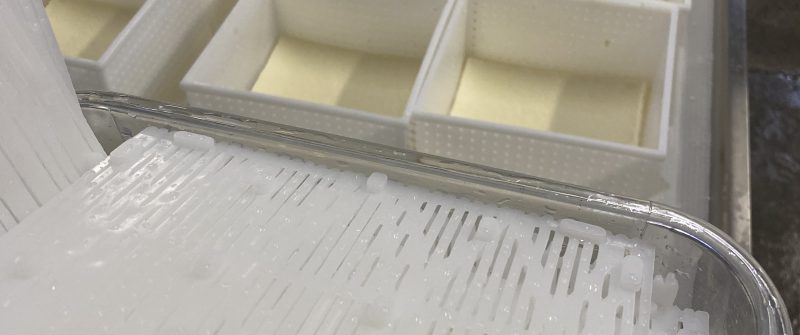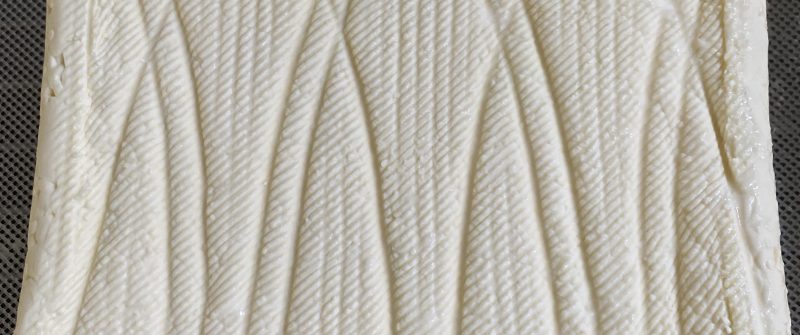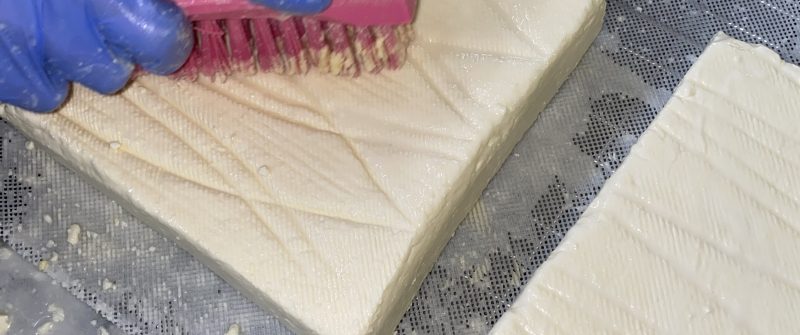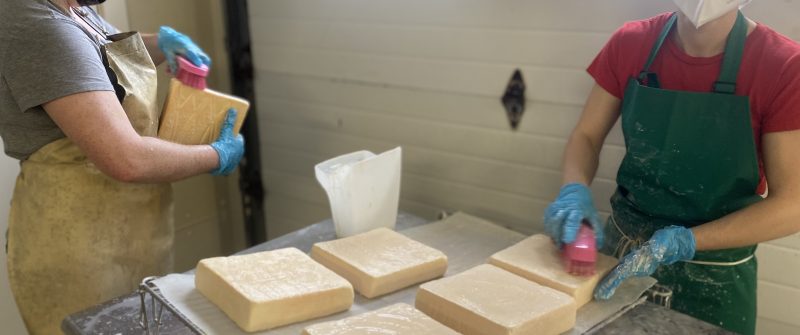AFFINAGE: TOBASI
Tobasi is one of the first cheeses developed at Cricket Creek Farm. A washed-rind cheese inspired by Taleggio, Tobasi is a semi-soft cheese with a custardy texture and an earthy flavor profile; aromas of mushrooms, garlic and peanuts, with sweet and sour cream flavors. Our favorite for grilled cheese sandwiches and macaroni and cheese. Made from our own pastured raw milk, Tobasi squares are approximately 3 lbs each and aged for a minimum of 60 days.
Tobasi is aged the minimum time required by US law for raw milk cheeses. It gets its color and texture from the specific bacteria that is introduced inside and outside the cheese, breaking down proteins in a process known as proteolysis that creates the rich flavors and creamy consistency. And while all that is going on inside the cheese, on the outside a battle is brewing. Introduced and environmental staphylococci and yeasts colonize the cheese surface in an effort to deacidify and set the cheese up for successful washing. The natural molds in the environment want a taste of that cheese too, so they will latch on to the outer layer looking for a way in. In those first 60 days, our cheesemakers are the foot soldiers in the battle, determined to ward off unwelcome microorganisms by building the cheese’s natural defenses and thickening its wall. It takes 60 days for that wall to become impenetrable and strong enough to send our Tobasi safely into the world.








The unique pattern of the Tobasi block mimics the tradition of reed mats aiding in the development of the cheese.
After the curds are set in the mold and the blocks are flipped, it is placed in a brine to cure, then set in a temperature and humidity controlled room. The rind of Tobasi grows corynebacteria (the distinct orange color) that are present from the make and washing. The cheese is washed multiple times a week to develop the rind and control the loss of moisture. The rind of a young cheese may be a little tacky. As it ages it will build a smear as it is washed. Every few days we take the blocks of Tobasi out of their aging room and “wash” them with a solution which includes a combination of corynebacterium, yeast, and salt in water. The salt wards off unwanted molds giving the introduced a chance to develop. A sanitized brush is used to wash the liquid solution on the cheese surface, making a thin creamy layer and natural barrier. We do this to between 50 and 70 cheese blocks per batch, one at a time, scrubbing with careful attention to their maturity and textural needs, flipping them and rotating their place in the stack daily so that they gain a variety of air exposure and even ripening as they age. We do this three times a week when batches are less than a month old, and reduce it to once or twice a week after the first month. The wash process is a messy one, and after completing a batch or the batches for the day, we sanitize the table, floor, walls, doors, and our aprons with hot soapy water and a sanitizer solution. Cleanliness is key. The Tobasi, because it is a soft-rind cheese, needs to be monitored to ensure that it doesn’t stay too wet or dry out too quickly.
Tobasi is great to eat after it reaches the 60 day mark, however the blocks that remain beyond that continue to receive a wash every so often to keep them from drying out. As they age they develop a strong golden, orange crust
